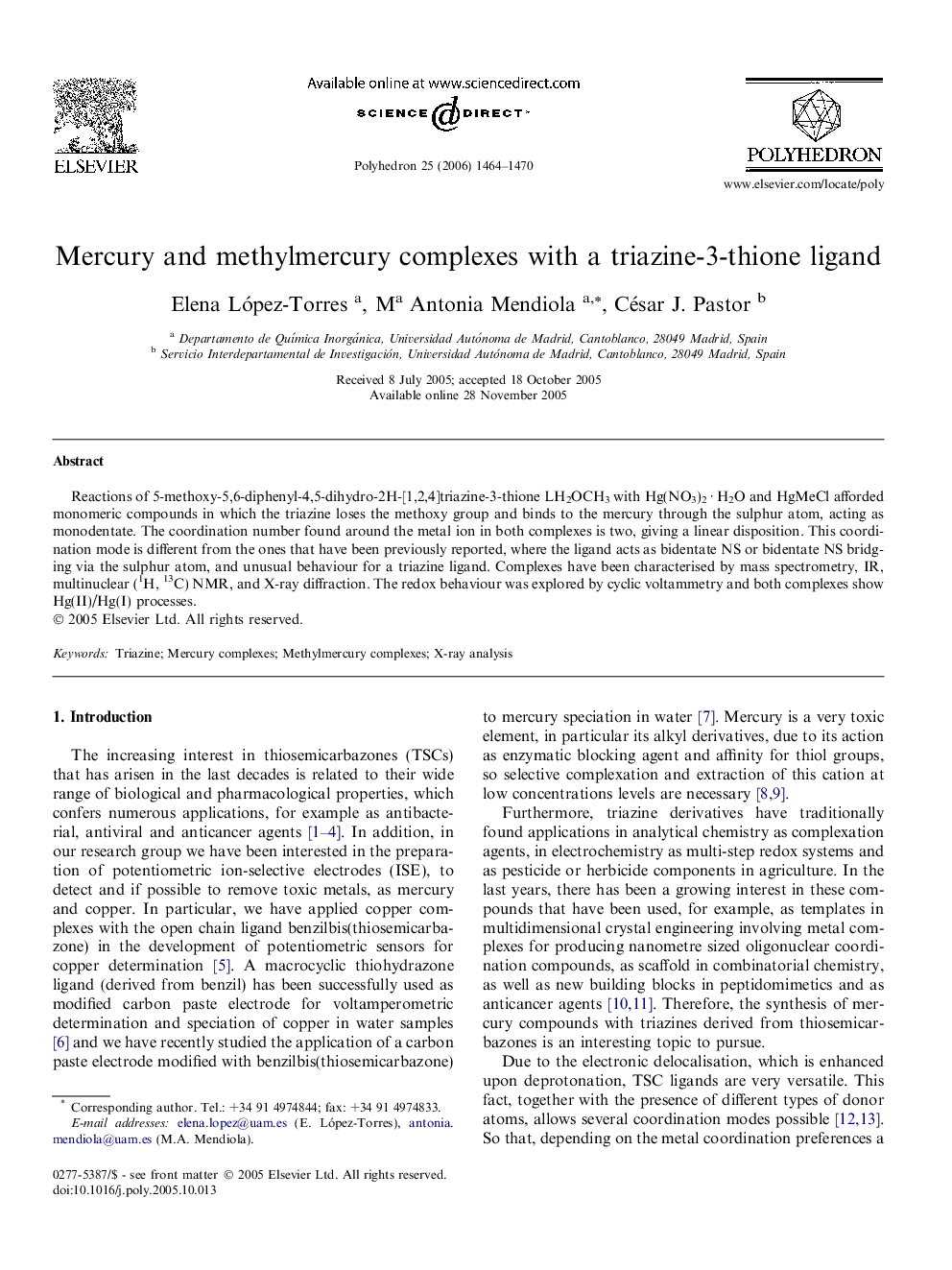| Article ID | Journal | Published Year | Pages | File Type |
|---|---|---|---|---|
| 1335779 | Polyhedron | 2006 | 7 Pages |
Reactions of 5-methoxy-5,6-diphenyl-4,5-dihydro-2H-[1,2,4]triazine-3-thione LH2OCH3 with Hg(NO3)2 · H2O and HgMeCl afforded monomeric compounds in which the triazine loses the methoxy group and binds to the mercury through the sulphur atom, acting as monodentate. The coordination number found around the metal ion in both complexes is two, giving a linear disposition. This coordination mode is different from the ones that have been previously reported, where the ligand acts as bidentate NS or bidentate NS bridging via the sulphur atom, and unusual behaviour for a triazine ligand. Complexes have been characterised by mass spectrometry, IR, multinuclear (1H, 13C) NMR, and X-ray diffraction. The redox behaviour was explored by cyclic voltammetry and both complexes show Hg(II)/Hg(I) processes.
Graphical abstractA new complex derived from 5-methoxy-5,6-diphenyl-4,5-dihydro-2H-[1,2,4]triazine-3-thione (LH2OCH3) with methylmercury chloride was synthesised and characterised. Its crystal structure, as well as those of the mercury nitrate derivative, shows that the ligand L is only bonded through the sulphur atom, coordination mode that is nor usual in this kind of ligands, giving a linear geometry around the mercury ion in both complexes.Figure optionsDownload full-size imageDownload as PowerPoint slide
